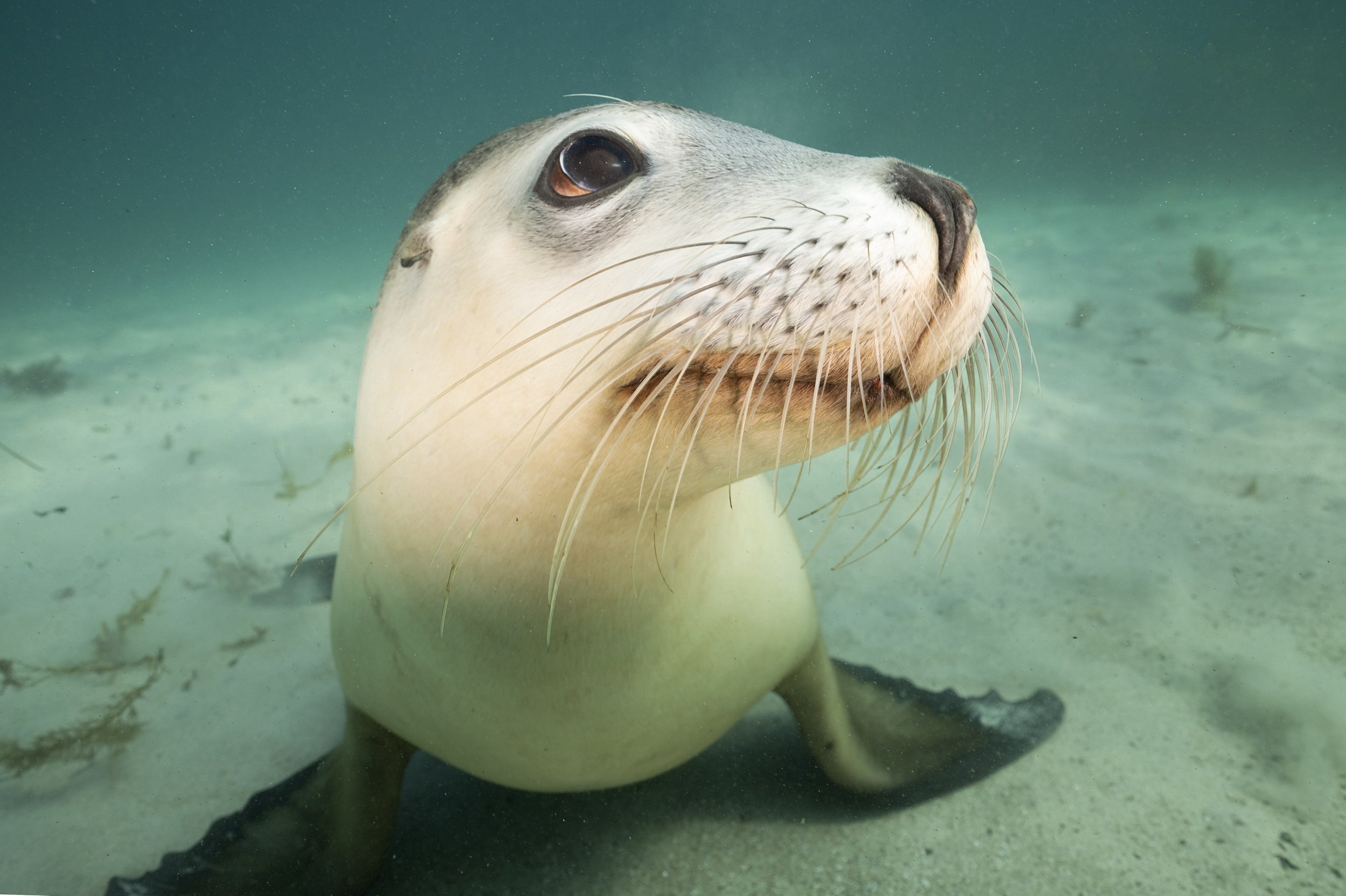
Impact Report 2024
Report from the Supported Organisations & Their Programs
Report Date: 23 April 2025
In the summer of 2023/24, the Great Barrier Reef faced two destructive tropical cyclones, severe flooding that impacted the quality of water, and crown-of-thorns starfish outbreaks that ravaged healthy corals. This culminated in one of the most widespread and severe mass coral bleaching events ever recorded.
While these events have been devastating, it’s not too late for the future of our Reef. It’s more critical than ever to come together and take swift action to restore and protect our planet’s coral reefs.
Thanks to the support of The Sapphire Project, our partners and donors, we have:
Delivered more than 100m coral babies to the Reef during the annual spawning event
Used more than 9,500 coral cradles to deploy coral babies and help them survive in the critical first year of life
Achieved up to 1,000-times increase in coral production through world-first semi-automated and robotic methods to mass produce coral
Tested more than 2,000 coral colonies for thermal tolerance and proof-of-concept developed for the first generation of corals with higher heat tolerance
Supported the development of a portable micro nursery concept that enables aquaculture facilities to be shipped to Pacific locations for local communities to grow and deploy heat-tolerant corals at scale
Together we are pioneering innovative solutions for some of the most complex environmental challenges of our time. Thank you for helping us create a better future for the world’s coral reefs.










Program impact
The One Tree Island Research Station has been a world-leading hub for teaching and research activity for 50 years, contributing to our understanding of these important ecosystems and training the next generation of reef guardians, scientists and advocates. The remoteness of the station is a key part of its success, yet this also makes it very costly to operate and use. The funding provided by The Sapphire Project has been critical in allowing us to further our mission to understand the reef in order to secure its future.
Key developments and progress
The funding provided to the One Tree Island Research Station has been allocated to the following initiatives:
1. Reef impact and recovery assessment
One Tree Reef has had a difficult year in 2024, experiencing one of its most severe bleaching events in over 20 years. Sapphire funding is being used to support ongoing efforts to study the effects this bleaching event is having on One Tree Reef. This work will help us to better understand which coral taxa are more or less resilient to bleaching and what the flow-on effects of this bleaching will be for the rest of the reef assemblage.
2. One Tree Island Research Station infrastructure
Sapphire funding is being used to provide an uplift to station infrastructure which supports the education of the next generation of marine scientists. Every year the station hosts 80-100 high school and undergraduate students, providing them with what for many is an experience of a lifetime. Sapphire funding is being used to purchase snorkel equipment which can be used by student groups as well as upgrade our collection of scientific equipment to support education initiatives (underwater slates, measuring tapes, etc.).
Information about the physical environment of the reef and station is critical to support science and safe operations. Funding is being used to purchase a package of water and weather monitoring equipment which will give the station access to real-time information on current conditions. We hope to offer and archive these data streams via the same portals that support similar reef-wide data, hosted nationally.
3. One Tree Island Research Station – Research Student Support
One Tree Reef plays a critical role as a training ground for the next generation of marine scientists. Sapphire funding will be directed to support post-graduate research student projects, specifically to help offset the costs of travel and fees to access and use the station. This will facilitate greater access to the station by these students.



The Australian sea lion is one of the most endangered marine mammals on Earth, with populations continuing to decline. Thanks to the generous support of The Sapphire Project and the Great Barrier Reef Foundation, the Australian Sea Lion Recovery Foundation has funded four critical research and monitoring projects to aid in their survival.
1. Artificial Pup Shelters (South Australia)
With pup mortality rates rising and an overall decline of 64% in three generations, this project is trialling specially designed artificial shelters to provide thermal relief for pups facing extreme temperatures. Initial trials begin this summer, with scientists measuring shelter occupancy, heat gradients, and body temperature differences. Sapphire funding has helped design, build, deploy, and monitor three pup shelters, with further funding needed to expand this initiative.
2. DNA Sequencing of Abrolhos Colony (Western Australia)
This project examined the most north-westerly Australian sea lion population at the Abrolhos Islands, using DNA sequencing to better understand breeding behaviors, genetic diversity, and environmental adaptability. The data will inform conservation priorities, ensuring the species’ long-term survival. Sapphire funding covered the costs of tissue extraction and DNA sequencing, contributing vital knowledge to the broader Saving Native Species initiative.
3. Sea Lion Cameras and GPS Tags
Building on a successful pilot project that mapped over 5,000 square kilometres of sea lion habitat, this initiative is equipping sea lions with cameras and GPS tags to study their foraging behaviour, diet, and habitat use. Over the next two to three years, 30–40 deployments will take place at Seal Bay (Kangaroo Island), primarily focusing on adult females. Insights gained will be crucial for fisheries management and marine park planning. Sapphire funding has enabled the purchase of new cameras and GPS tags, but additional support is needed to expand this groundbreaking research.
4. PhD Scholarship to Advance Sea Lion Camera Research
A Flinders University PhD candidate will drive the ongoing sea lion camera research, analysing data to deepen our understanding of sea lion behaviour and conservation needs. The Australian Sea Lion Recovery Foundation is providing $25,000 in initial funding, with plans to secure further support for up to four years.





The Australian Museum’s Lizard Island Research Station (LIRS) is widely acknowledged as one of the best coral reef field research stations in the world. The LIRRF supports research and infrastructure at LIRS. Each year up to 100 research projects are supported at the Station. The vast majority of research supported at LIRS involves studying coral ecosystems under stress and trying to identify ways to support and protect these ecosystems.
The funds received in 2024 are directed to support the build of a new staff house. Supporting and maintaining infrastructure at LIRS is a critical element of the Station’s success. Critical also is the support researchers receive from staff. Currently, there are only four full-time staff members – two Co-Directors and two maintenance staff. These four staff members live in two houses. An additional staff member is much needed to support an extremely heavy and consistent 7 days a week workload, with current usage of the station being up to 7,000 person nights annually. The recruitment of a new staff member is underway and they will need a home to live in.
Timetable of construction of the new house will coincide with the build of a new laboratory. Tenders for both projects will be called by mid-year, with builders selected, contracts signed and building works commenced as soon as possible.









For many iconic, wide-ranging sharks, such as tiger sharks and great hammerheads, habitat use and interactions with their environment can shift significantly throughout their life cycle. Yet, our understanding of critical habitats for juvenile sharks, particularly nursery grounds and pupping areas, remains limited.
Thanks to the generous support of The Sapphire Project, researchers from Biopixel Oceans Foundation have launched a new study to investigate how juvenile sharks use a variety of essential habitats. This funding has enabled the purchase of acoustic tracking tags, which have allowed Biopixel Oceans Foundation to gather detailed insights into shark habitat use over time and space.
Over the past year, Biopixel Oceans Foundation researchers have carried out several field expeditions along the Queensland coast, successfully deploying seven new acoustic tags on juvenile tiger sharks and collecting genetic samples from juvenile bull sharks for a population study. Early tracking data has revealed notable differences in individual movement patterns – while some sharks remain close to their tagging locations, others travel much farther afield, showing behavioural variability. As these juveniles continue to grow, their movement data will provide a clearer picture of how habitat use evolves throughout different stages of their early life.




“All the great things are simple, and many can be expressed in a single word: freedom, justice, honour, duty, mercy, hope.”
Winston Churchill






